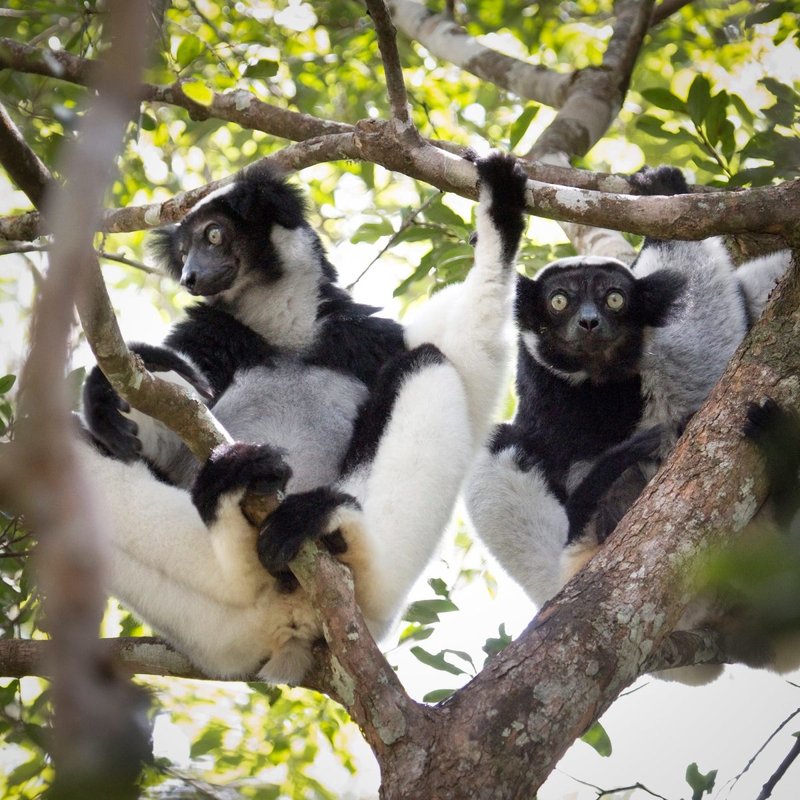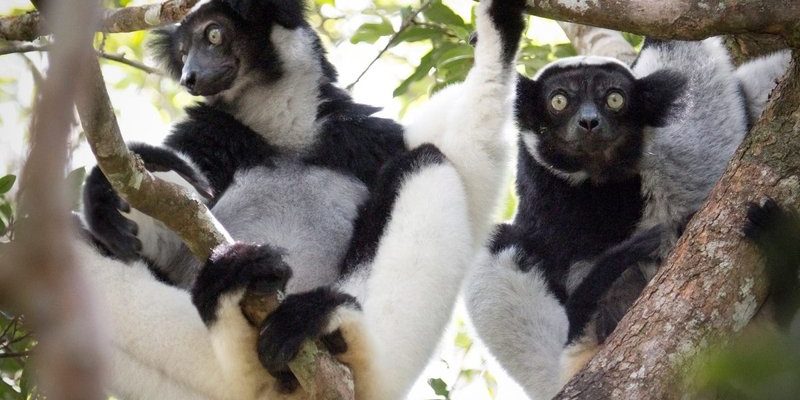
Indris are not just adorable; they embody the intricate dance of life in the wild. You could say raising young indris is like a carefully choreographed performance, full of communication and teamwork. By understanding how indris raise their young, we can appreciate their role in the ecosystem and how they adapt to their environment. So, let’s dive into the world of these incredible creatures and discover the beauty of indri parenting!
Indri Family Structure
Indris have a fascinating social structure that plays a significant role in how they raise their young. Typically, these lemurs live in small family groups, which usually consist of a mated pair and their offspring. This family unit provides a nurturing environment for the young, allowing them to learn essential survival skills.
One of the most interesting aspects of indri family dynamics is the strong bond between parents. The male and female often work together to care for their young, sharing responsibilities like grooming and feeding. This teamwork is crucial, especially during the early months when the infants are most vulnerable. Honestly, it’s heartwarming to witness how these parents communicate and support each other!
You might be wondering how the family structure affects the young indris. Well, living in a close-knit group allows the little ones to learn from their parents while also interacting with their siblings. These interactions help them develop social skills that are vital for survival in the wild. As they grow, they begin to mimic their parents’ behaviors, gaining confidence and independence.
The Birth and Early Days
Indris usually give birth to a single infant after a gestation period of about 4 to 5 months. When the baby arrives, it’s an exciting time for the family! The parents are incredibly attentive, and the mother often carries her infant on her belly for the first few weeks. This close contact not only keeps the baby safe but also helps them bond.
During those early days, the mother is primarily responsible for feeding her young. Indri milk is rich in nutrients, providing everything the baby needs to grow strong. You might imagine this as a cozy, nurturing setup where the baby can snuggle and feed, surrounded by the warmth of its mother’s love.
As the young indri starts to grow, it gradually becomes more adventurous. It will cling to its mother for safety but will also begin to explore its surroundings. This exploration is a crucial part of its development, as it learns about the forest and how to navigate through it. Watching a young indri take its first steps into the world is like witnessing the beginning of a grand adventure!
Learning and Play
Once the indri infants are a bit older, they enter a phase of active learning and play. This stage is rich with opportunities for exploration, social interaction, and skill development. You might picture them leaping from branch to branch, enthusiastically testing their strength and agility.
Playtime is essential for developing motor skills and social connections. Young indris often engage in playful wrestling or chasing games with their siblings. This helps them understand their place in the family hierarchy and learn how to interact with others. Just like kids on a playground, these young lemurs are learning the rules of their world!
Moreover, through play, they practice important survival skills. They learn to climb, balance, and even forage for food. You might be surprised to learn that indris are primarily folivores, meaning they mostly eat leaves. As they observe their parents, they pick up on what plants are safe to eat and how to find them in their towering forest habitat.
Communication Among Indris
Indris are known for their distinctive and loud calls, which can be heard echoing through the forests of Madagascar. These vocalizations are an essential part of their social interactions, especially when it comes to raising young. You might think of these calls as a way for the family to stay connected amidst the vast trees.
The communication between indris is not just about sound; it also involves body language. They use gestures and positioning to convey messages to one another. For instance, when a mother calls out, her infant quickly responds, ensuring that they stay close together. This communication is vital for the safety of the young, helping them avoid potential dangers in their environment.
Additionally, vocalizations can signal various needs, from warning of predators to indicating availability for nursing. It’s fascinating how these vocal cues strengthen family bonds and ensure the survival of their young. As a result, indris form a unique communication system that supports their parenting efforts.
Indri Parenting Challenges
Raising young indris is not without its challenges. The rainforest environment poses various threats, such as predators and habitat destruction. Additionally, food scarcity can affect the health of both the parents and their offspring. It’s a constant balancing act between ensuring safety and meeting nutritional needs.
Predators like snakes and birds of prey can pose a risk to the young indris, especially when they venture out of the safety of their parents’ reach. This is where the close family dynamic comes into play; parents are always on high alert, keeping a watchful eye on their little ones. The teamwork between the male and female helps them effectively guard against these threats.
Moreover, habitat loss due to deforestation has become a pressing issue for many Madagascar species, including indris. Losing their forest home means fewer resources for food and shelter, making it harder for families to thrive. Conservation efforts are essential to provide a better future for these magnificent creatures and ensure their unique parenting methods continue for generations to come.
The Role of Conservation in Indri Survival
Given the unique challenges they face, conservation plays a crucial role in the survival of indris and their young. Various organizations are working tirelessly to protect their habitats and raise awareness about their plight. You might think of conservation efforts as a safety net that allows these families to thrive in the wild.
One key aspect of conservation is habitat restoration. This involves replanting native vegetation and creating protected areas to ensure indris have a safe environment to raise their young. These efforts not only help indris but also benefit other species sharing their habitat, creating a healthier ecosystem overall.
Education and community involvement are also vital. By teaching local communities about the importance of indris and their role in the ecosystem, we can foster appreciation and respect for these beautiful animals. When people understand the value of preserving their wildlife, they become active participants in conservation efforts, helping to ensure a bright future for indris.
In conclusion, understanding how indris raise their young in the wild opens up a window into their world. From family structure to their unique communication methods, these lemurs showcase a beautiful tapestry of parenting that helps them navigate the challenges of life in the rainforest. By supporting conservation efforts, we can ensure that future generations of indris continue to thrive and share their spectacular parenting stories with us all. It’s a reminder that every creature, big or small, plays a vital role in the circle of life.

